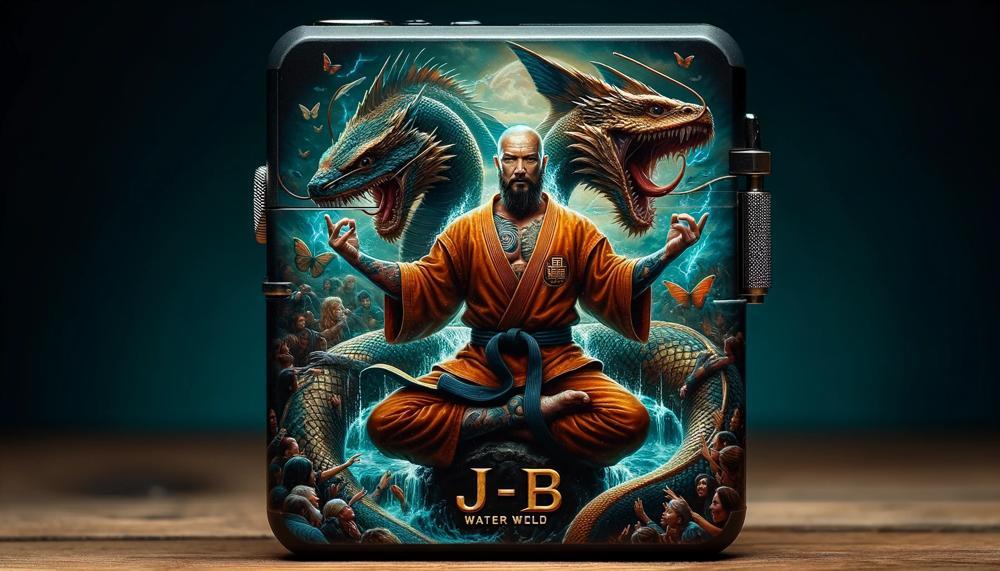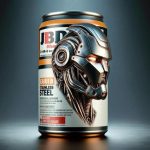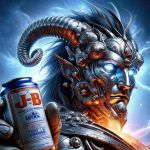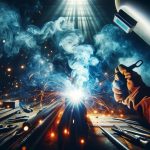Because of its exceptional ability to bind and repair a broad variety of materials, especially in wet settings, JB Water Weld has become a go-to epoxy in the world of do-it-yourself repairs and home improvement projects.
But when it doesn’t solidify, the disappointment is evident, and finding answers becomes crucial. This blog article explores the murky seas of JB Water Weld’s sporadic resistance to hardening and reveals the causes of this confusing problem.
Knowing the reasons behind this product’s failure to set may help you avoid wasting time, money, or frustration—whether you’re an experienced do-it-yourself enthusiast or a novice anxious to patch that leaking pipe.
So, why jb water weld not hardening?
There are many reasons why JB WaterWeld may not harden correctly. These include:
- Inadequate mixing: fully combine the components, scraping down the container, the surface, and the mixing stick as you go.
- Not stirring for long enough: If you don’t stir for long enough, the epoxy won’t warm up and cure.
- Goods is too old: The goods could be too old or might have been in use for a long time.
- Room temperature: It can be too chilly in here. Work at a temperature range of 73.4°F to 84.2°F, preferably 77°F, for optimal results.
- Too much heat: Steer clear of using an IR light, heat gun, or flame since they may all cause the connection to break.
Two-part epoxy JB WaterWeld sets in four minutes, but it takes a full day to cure. After four minutes, it becomes powerful enough for moderate usage, but it takes a full day to achieve its peak potency. It is advised to wait 24 hours before using it heavily.
Contents
What is JB Water Weld?
JB Water Weld is a two-component epoxy putty acclaimed for its utility across a broad spectrum of repair and bonding tasks. Unlike the intricate dance of traditional welding, which demands heat and often a professional’s touch, JB Water Weld offers a straightforward, heatless application. This putty shines in environments ranging from plumbing to the marine, automotive, and domestic domains, adhering with equal finesse to metals, woods, concrete, and plastics.
How JB Water Weld Stands Apart from Traditional Welding:
| Aspect | JB Water Weld | Traditional Welding |
|---|---|---|
| Equipment Needed | None, applies directly | Heat source (e.g., welder) required |
| Application Process | Mix and apply by hand | Requires welding skills and tools |
| Materials Compatible | Metals, wood, plastic, concrete | Primarily metals |
| Type of Bond | Chemical bond | Fused metal bond |
| Gap Filling | Can fill gaps and cracks | Requires precise fitment |
| Skill Level Required | Minimal, user-friendly | High, specialized training |
JB Water Weld’s formulation includes a resin component that hardens upon contact with water, coupled with a hardener to expedite curing. This epoxy’s prowess lies in its chemical bonding capability, creating a sturdy union between applied surfaces without the permanence of a welded join. Yet, its strength under pressure and load remains commendable.
One salient advantage of JB Water Weld over traditional methods is its ability to mend gaps and imperfections with ease, a feat often challenging in welding without impeccable surface preparation. However, its efficacy is not without limits. Proper mixture ratios, ambient temperature adherence, and substrate preparation are critical to harness JB Water Weld’s full potential. Failures in application, often due to incorrect mixing or application on overly damp surfaces, highlight the necessity of following product guidelines for a successful cure.
Why Does JB Water Weld Not Harden?
JB Water Weld might turn into a bit of a muddle instead of hardening due to a few slip-ups during its application. Here’s the skinny on why it happens and how you can fix it:
- Incorrect Mixing: The heart of the problem often lies in not mixing the two components – the resin and the hardener – with the right care. They need to be mixed thoroughly to kickstart the curing process. If not, you’ll end up with a patchy mix that won’t set.
- Temperature Tantrums: JB Water Weld is a bit picky about its environment. It likes to cure at a cosy room temperature, roughly between 50°F and 90°F (10°C to 32°C). Too chilly or too warm, and it throws a fit, either slowing down the curing or rushing it and ending up brittle.
- Moisture Mayhem: Despite its name, JB Water Weld doesn’t take kindly to moisture during the curing dance. Wet or damp surfaces throw a wrench in the works, preventing it from setting solid.
Now, how do you steer clear of these pitfalls? Here’s a cheat sheet:
| Issue | Fix | Why It Works |
| Incorrect Mixing | Mix thoroughly for at least a minute using equal parts. | Ensures even distribution of resin and hardener, essential for a complete cure. |
| Temperature | Keep the repair area within 50°F to 90°F. | Optimal temperature range for the curing process to occur as intended. |
| Moisture | Dry surfaces thoroughly before application. | Prevents moisture interference in the curing process. |
By keeping these pointers in mind and applying a bit of elbow grease, you can ensure your JB Water Weld sets hard and holds strong, just as it’s supposed to.
Incorrect Mixing of Resin and Hardener
The precise blending of resin and hardener is pivotal for the optimal performance of JB Water Weld. Incorrect mixing can usher in a host of complications that compromise the integrity and effectiveness of the repair. Below, we dissect the implications and their impact on the hardening process.
Off Ratio Mix
- Problem: Not adhering to the specific ratio of resin to hardener.
- Consequence: An imbalance leads to incomplete curing, resulting in a tacky or soft finish that lacks the requisite strength.
Low Temperature
- Problem: Mixing or curing in conditions below the recommended temperature range.
- Consequence: Slowed or stalled curing process, extending the time needed to achieve full hardness, or potentially leading to an uncured product.
Insufficient Blending
- Problem: Failing to thoroughly mix the resin and hardener.
- Consequence: Uneven curing with soft spots and weakened structural integrity.
Surface Preparation
- Problem: Applying the mixture to contaminated or improperly prepared surfaces.
- Consequence: Poor adhesion, reducing the effectiveness of the bond and potentially leading to failure under stress.
Incorrect Application
- Problem: Applying excessive clamping pressure or inadequate bonding area.
- Consequence: Squeezed-out epoxy reduces joint strength; too small an area fails to distribute stress properly.
Environmental Factors
- Problem: Moisture and humidity can interfere with curing.
- Consequence: Amine blush forms on the surface, necessitating removal and potentially affecting the finish.
| Factor | Issue | Impact on Hardening |
| Ratio | Off-balance mix | Incomplete cure |
| Temperature | Below recommended range | Delayed or failed cure |
| Blending | Inadequate mixing | Uneven curing |
| Surface Prep | Contaminated application area | Poor adhesion |
| Application | Excessive clamping or small area | Weaker joint |
| Environment | Humidity or moisture | Amine blush |
Addressing these issues is paramount. Ensuring a balanced mix, proper temperature, thorough blending, correct surface preparation, and appropriate application methods will safeguard the integrity of your JB Water Weld repair.
Temperature Range for JB Water Weld Application

The recommended temperature range for using JB Water Weld is between 70-80 degrees Fahrenheit. This range is pivotal for the hardening process because it ensures optimal curing time and the formation of a robust, durable bond.
Why the Temperature Range is Critical:
- Optimal Curing: Within this thermal window, JB Water Weld cures at a rate that allows it to develop maximum strength.
- Material Integrity: Staying within the advised temperature helps maintain the chemical properties of JB Water Weld, ensuring the repair’s longevity.
Understanding the Temperature Impact:
Below is a table that outlines the consequences of not adhering to the recommended temperature range:
| Temperature | Effect on JB Water Weld | Result |
| Below 70°F | Slower curing time | Weak bond formation |
| 70-80°F | Optimal curing time | Strong, durable bond |
| Above 80°F | Faster curing time | Potential for improper curing |
It’s clear from the data that maintaining the temperature within the sweet spot is not just beneficial but essential. Straying too far on either side of the spectrum can result in a compromised repair, which is why it’s not just a suggestion, but a necessity, to keep an eye on your workspace’s thermometer when working with JB Water Weld.
Keep your work area well-ventilated yet free from draughts that might skew the temperature readings.
Surface Preparation for JB Water Weld Application
To ensure a successful JB Water Weld application, it’s essential to prep the surface meticulously. Follow these practical steps to make the surface ready for the weld, ensuring a strong, lasting bond.
| Step | Action | Details |
| 1 | Clean the Surface | Utilise a degreaser or solvent to eliminate all traces of dirt, oil, or debris. This foundational step is crucial for a clean working base. |
| 2 | Roughen the Surface | Employ sandpaper or a wire brush for texturing the surface. This enhances the adhesion by providing a better grip for the weld. |
| 3 | Dry and Wipe | After roughening, wipe the area with a clean cloth. Ensure it’s completely dry to avoid any moisture interfering with the weld. |
| 4 | Apply Metal Primer (if metal) | For metal surfaces, a metal primer can further improve the weld’s grip. It acts as an intermediary layer, boosting the weld’s effectiveness. |
| 5 | Mix and Apply JB Water Weld | Follow the mixing instructions precisely. Apply the weld evenly across the prepped area. Ensure it’s smooth to avoid any later inconvenience. |
| 6 | Cure Time | Let the weld cure fully before putting any strain on the area. This patience ensures the bond strength and longevity of the repair. |
By adhering to these steps, the JB Water Weld application will be robust and enduring. Remember, the key to a successful application lies in thorough preparation. A job done in haste might save time initially but can lead to more trouble down the line.
Conclusion
JB Water Weld, which promises strong, water-resistant connections across a varied variety of materials, has emerged as a beacon of hope for many in the realm of do-it-yourself repairs. However, the disappointment that results from it not hardening and converting potential victory into disappointment casts a tremendous shadow of dissatisfaction. Our investigation finds that the causes are many and intricately entwined with chemistry, environment, and method.
Through a thorough analysis of JB Water Weld’s problems, it becomes clear how important it is to mix precisely, maintain a careful temperature balance, store products properly, and choose components that work well together. Every element is crucial in making sure that JB Water Weld maintains its excellent reputation.
Mixing is an art form as much as a procedure; success depends on using the proper ratio and technique. Within its comfort range, temperature dictates the rate at which the curing process proceeds and is both a friend and an adversary. Outdated or incorrectly kept items are a quiet killer of effectiveness that serves as a reminder of the need for material care diligence. Finally, knowing which materials work well together guarantees that JB Water Weld can create the legendary unbreakable bonding.
To sum up, the key to being an expert with JB Water Weld is realizing and appreciating its inherent qualities. By taking care of these important variables—mixing, temperature, storage, and compatibility of the material—we not only solve the puzzle of why it doesn’t always harden, but we also equip ourselves with the information to avoid failures in the future.





